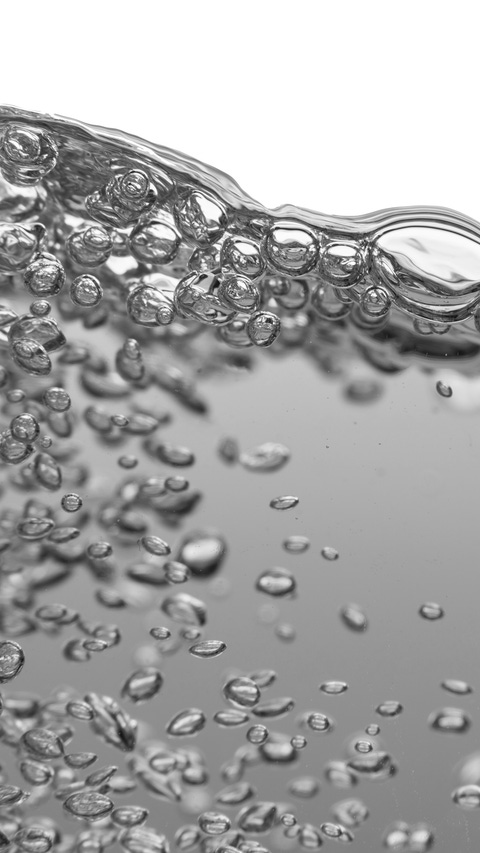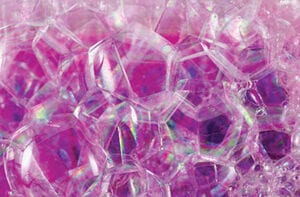The Role of Defoamers in Enhancing Item High Quality and Performance
In numerous making procedures, the presence of foam can significantly prevent item high quality and operational efficiency. Defoamers act as essential ingredients that alleviate this problem, making sure smoother production workflows while boosting the visual and functional qualities of the end products (defoamers). Their application extends a wide variety of industries, from food and drink to pharmaceuticals, where uniformity and reliability are vital. However, the option of the suitable defoamer can be essential to accomplishing optimum results, elevating essential inquiries about solution compatibility and performance metrics that merit more exploration.
Comprehending Defoamers
Recognizing the duty of defoamers is essential for maintaining product quality across various industries. Defoamers are chemical additives designed to reduce and avoid the formation of foam in fluid systems, which can negatively affect procedures such as blending, filling up, and surface area tension. Frothing can result in inefficiencies, product defects, and endangered visual charm, making defoamers a vital element in manufacturing operations.
In industrial applications, defoamers assist to enhance item consistency and stability. The reliable use of defoamers not just guarantees smoother production processes however also adds to superior item efficiency.
Moreover, the option and formulation of a defoamer have to straighten with certain application requirements, such as compatibility with various other ingredients, performance under varying temperature and pH problems, and potential regulative restraints. Eventually, comprehending defoamers' features and their importance in different solutions is crucial for maximizing production and ensuring the best end items.
Kinds of Defoamers
Defoamers can be categorized right into several types based upon their composition and system of activity. The key kinds consist of silicone-based, non-silicone organic, and inorganic defoamers.
Silicone-based defoamers are among one of the most effective, largely due to their capability to spread quickly on the fluid surface area and disrupt foam formation. Their distinct chemical structure enables exceptional stability, making them appropriate for high-temperature applications and settings with varying pH levels.
Non-silicone natural defoamers, usually composed of fatty acids or all-natural oils, are valued for their biodegradability and reduced poisoning. These are generally utilized in food and drink applications where safety and security and environmental influence are paramount.
Inorganic defoamers, which include materials like talc or calcium carbonate, act by increasing the thickness of the fluid, therefore reducing foam stability. They are commonly made use of in commercial procedures where compatibility with other materials is not a concern.
Each kind of defoamer has unique advantages and limitations, enabling tailored solutions depending on the details frothing problems come across in different applications. Understanding these distinctions is critical for optimizing performance and attaining preferred product quality.
Applications Across Industries
Various industries leverage defoamers to boost product high quality and operational efficiency. In the food and drink market, defoamers are important in processes such as brewing and dairy products production to avoid foam development, which can bring about inadequacies and product inconsistency. By regulating foam, suppliers can make certain much better yield and an extra uniform product.
In the pharmaceutical sector, defoamers play an important role in the formula of fluid medicines, where too much foam can hamper mixing and precise dosing. Their use assists maintain the stability of the formulations and promotes smoother manufacturing processes.
The paint and layers market additionally relies upon defoamers to enhance the performance of products throughout application. By reducing foam, these ingredients make sure a smoother finish and improve the visual qualities of the end product.

Benefits of Using Defoamers
While the application of defoamers differs Visit Website throughout industries, their benefits regularly enhance product quality and procedure performance. One substantial benefit is the decrease of foam formation during manufacturing procedures, which can or else cause manufacturing delays and disparities in product quality. By reducing foam, defoamers enable a smoother flow of products, promoting extra reliable procedures and decreasing the possibility of equipment breakdowns.
Furthermore, the use of defoamers can improve the look and structure of final items. In markets such as finishes, paints, and food processing, excessive foam can endanger the visual aesthetics and total high quality, while the suitable defoamer application ensures a consistent surface and preferable attributes. Defoamers can add to cost financial savings by decreasing waste throughout production and optimizing the usage of raw materials.

Choosing the Right Defoamer
Choosing the appropriate defoamer is crucial for maximizing production procedures and ensuring product quality. The selection of defoamer affects not just the efficiency of foam control yet likewise the general performance characteristics of the end product. Factors to consider consist of the kind of application, the chemistry of the formulation, and the ecological problems under which the item will certainly be utilized.
Different markets may require specific defoamer kinds, such as silicone-based, natural, or polymeric defoamers. Recognizing the compatibility of the defoamer with the key ingredients is important to prevent negative reactions that could compromise item honesty. Furthermore, the defoamer's effectiveness in various temperatures and pH degrees have to be assessed to make sure constant efficiency.
Checking the defoamer in small applications can supply beneficial understandings right into its efficiency and viability. Factor to consider of regulative compliance, particularly in food, pharmaceuticals, and cosmetics, is extremely important in choosing a defoamer. Ultimately, a complete evaluation of these variables will lead to the option of a defoamer that not only regulates foam properly however also improves the top quality and performance of the last product.
Final Thought

In verdict, defoamers click over here now are vital additives that substantially boost item quality and performance across different markets. By properly reducing foam formation, these agents not only enhance operational effectiveness however likewise add to the visual and useful honesty of items. The strategic selection and application of defoamers result in cost savings, optimized resource usage, and raised customer satisfaction. Overall, the significance of defoamers in industrial processes can not be overstated, as they play a vital role in achieving constant and high-grade outcomes.
Foaming can lead to inadequacies, item flaws, and jeopardized aesthetic appeal, making defoamers a vital component in making procedures.
